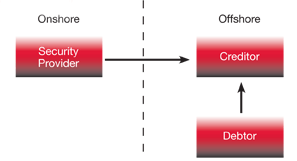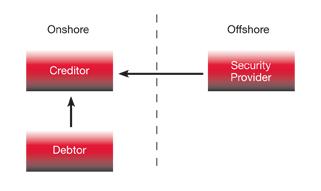The Regulation on Foreign Exchange Administration of Cross-border Security together with its operational guidelines (collectively the New Rules) released by the State Administration of Foreign Exchange (SAFE) came into effect on 1 June 2014. The New Rules substantially reform and liberate the regulatory regime for cross-border financing by relaxing most of the existing PRC regulatory restrictions on cross-border security/guarantee.
The New Rules are regarded as the first major attempt by SAFE to revamp and update its control over cross-border security in line with the PRC government’s policy of streamlining of administration and liberalising Renminbi. The main milestones are as follows:
- The approval, registration or filing requirements of SAFE in relation to cross-border security/guarantee agreements and various requirements under the present SAFE rules are no longer pre-conditions to the validity of the cross-border security/guarantee agreements
- The administrative distinction by SAFE between the security for financing purpose and the security for non-financing purpose are abolished
- SAFE approval on the enforcement of cross-border security/guarantee is abolished
The New Rules provide that the validity of a cross-border security agreement is no longer subject to SAFE approval, registration, filing and any other relevant administrative requirements. However, article 6 of the Judicial Interpretation of the Supreme People’s Court on Certain Issues Concerning the Application of the Security Law of the People’s Republic of China stipulates that a security agreement/guarantee shall be rendered invalid if no approval or registration for the provision of cross-border security is obtained from the relevant regulatory authority. The above Judicial Interpretation remains valid and, in the hierarchy of PRC legislation, it is higher than the New Rules issued by SAFE. Before the Supreme People’s Court declares that the above Judicial Interpretation is no longer applicable, the prudent view is that we should still regard that a cross-border security agreement is not valid until it is duly registered with SAFE.
The New Rules divide cross-border security/guarantee transactions into three categories: (i) onshore security/guarantee for an offshore debt (Outbound Security); (ii) offshore security/guarantee for an onshore debt (where the security provider is offshore, and the creditor and debtor are onshore) (Inbound Security); and (iii) other types of cross-border security/guarantee. Each category applies to its separate rules, which we will summarise in turn.
Outbound Security

Outbound Security refers to any security/guarantee provided by an onshore security provider in favour of an offshore creditor to secure a debt incurred by an offshore debtor.
According to the New Rules:
Who can provide Outbound Security
- Financial institutions (including banks and non-bank financial institutions) which meet the business criteria for carrying on the business of providing Outbound Security as required by the relevant regulators
- No longer subject to the annual quota allocated by SAFE
- Onshore companies (domestic or Foreign Invested Enterprises (FIEs))
- No longer subject to prior case-by-case SAFE approval or SAFE quota
- Qualification requirements such as minimum shareholding, meeting certain financial conditions and quotas are removed
Onshore individuals are now expressly permitted to provide Outbound Security
SAFE registration
- Banks – are now required to register any Outbound Security through a pre-established online platform with SAFE
- Non-bank financial institutions, onshore companies and onshore individuals – are now required to register any Outbound Security with local SAFE within 15 business days from the date of the security/guarantee agreement
SAFE is asking companies which signed cross-border security agreements and submitted registration applications to SAFE before 1 June 2014, but did not complete the registration process by 1 June 2014, to re-submit their registration application according to simplified procedures under the New Rules.
Enforcement
- The proceeds of enforcement of Outbound Security may be remitted to the offshore creditor without further SAFE approval/registration through an onshore bank which (if the guarantor/security provider is not a bank) will require the production of the SAFE registration certificate. If the Outbound Security is not registered with SAFE, late registration is permitted although SAFE may impose penalties on the guarantor/security provider
- Following enforcement, the onshore guarantor/security provider may be indemnified by the offshore debtor. The onshore guarantor/security provider shall register with SAFE its receivables received from such indemnification by the offshore debtor under the Outbound Security
Restrictions on use of proceeds
The proceeds of any offshore financing supported by the Outbound Security:
- Can be used only for the ordinary business purposes of the offshore debtor and not for speculative purposes
- Without SAFE approval, cannot be used for:
- Equity investment or shareholder loans into PRC entities
- Refinancing existing debt which was originally used for equity investment or shareholder loans into PRC entities
- Acquisition of an offshore company/group which has more than 50% of its assets in the PRC
- Initial payment to a PRC entity for a trade transaction in respect of goods or services which (i) is more than US$1,000,000 and exceeds 30% of the total price for such goods or service, and, (ii) is made at a time more than one year earlier than the date of delivery of goods or services
Restriction on providing new Outbound Security
If any existing Outbound Security becomes enforceable and the guarantor/security provider is not a bank without SAFE approval, such guarantor/security provider cannot provide new Outbound Security until the offshore debtor has fully repaid the debt owing to such guarantor/onshore security provider arising from the enforcement of the Outbound Security.
Inbound Security

Inbound Security refers to any security/guarantee provided by an offshore security provider/guarantor in favour of an onshore creditor to secure a debt incurred by an onshore debtor.
According to the New Rules:
Qualification requirements
- Onshore creditor – only onshore financial institutions licensed to conduct lending business can legally lend money in the PRC
- Onshore debtor – no restrictions and could be any onshore entities (domestic or FIEs) and individuals
- Offshore security provider/guarantor – no restrictions and could be any offshore entities or individuals
SAFE registration
Onshore creditors must register the Inbound Security through an online platform with SAFE
Enforcement
- Upon enforcement, the onshore creditor may process and receive the enforcement proceeds from the offshore security provider/guarantor directly
- After payment to the onshore creditor, the offshore security provider/guarantor will become a creditor of the onshore debtor. The onshore debtor shall register such foreign debt (Subrogated Foreign Debt) with the local SAFE within 15 business days after payment by the offshore security provider/guarantor. If the Subrogated Foreign Debt is not registered with SAFE, late registration is permitted although SAFE may impose penalties on the onshore debtor
Restriction on Subrogated Foreign Debt
The total outstanding principal amount of all the Subrogated Foreign Debt of an onshore debtor shall not exceed the amount of that onshore debtor’s net assets as shown in its audited financial statements for the previous financial year
Restriction on providing new Inbound Security
Before any Subrogated Foreign Debt is fully discharged, without SAFE approval, the onshore debtor cannot arrange any new Inbound Security or make any drawdown under any facility agreement which is supported by any Inbound Security
Other cross-border security
Other types of cross-border security refer to any cross-border security/guarantee other than Outbound Security and Inbound Security. Such other types of transactions include without limitation the following:
- The guarantor/security provider is onshore, either the creditor or the debtor is onshore and the other is offshore
- The guarantor/security provider is offshore, either the creditor or the debtor is onshore and the other is offshore
- All three parties are onshore, but the collateral is offshore
- All three parties are offshore, but the collateral is onshore
Under the New Rules, any PRC entities and individuals can freely enter into such other types of cross-border security/guarantee transactions with no need for approval or registration (but still subject to the underlying debtor’s compliance with foreign exchange rules in general).
This note is presented for informational purposes only and is not intended to constitute legal advice.
Client Alert 2014-159
